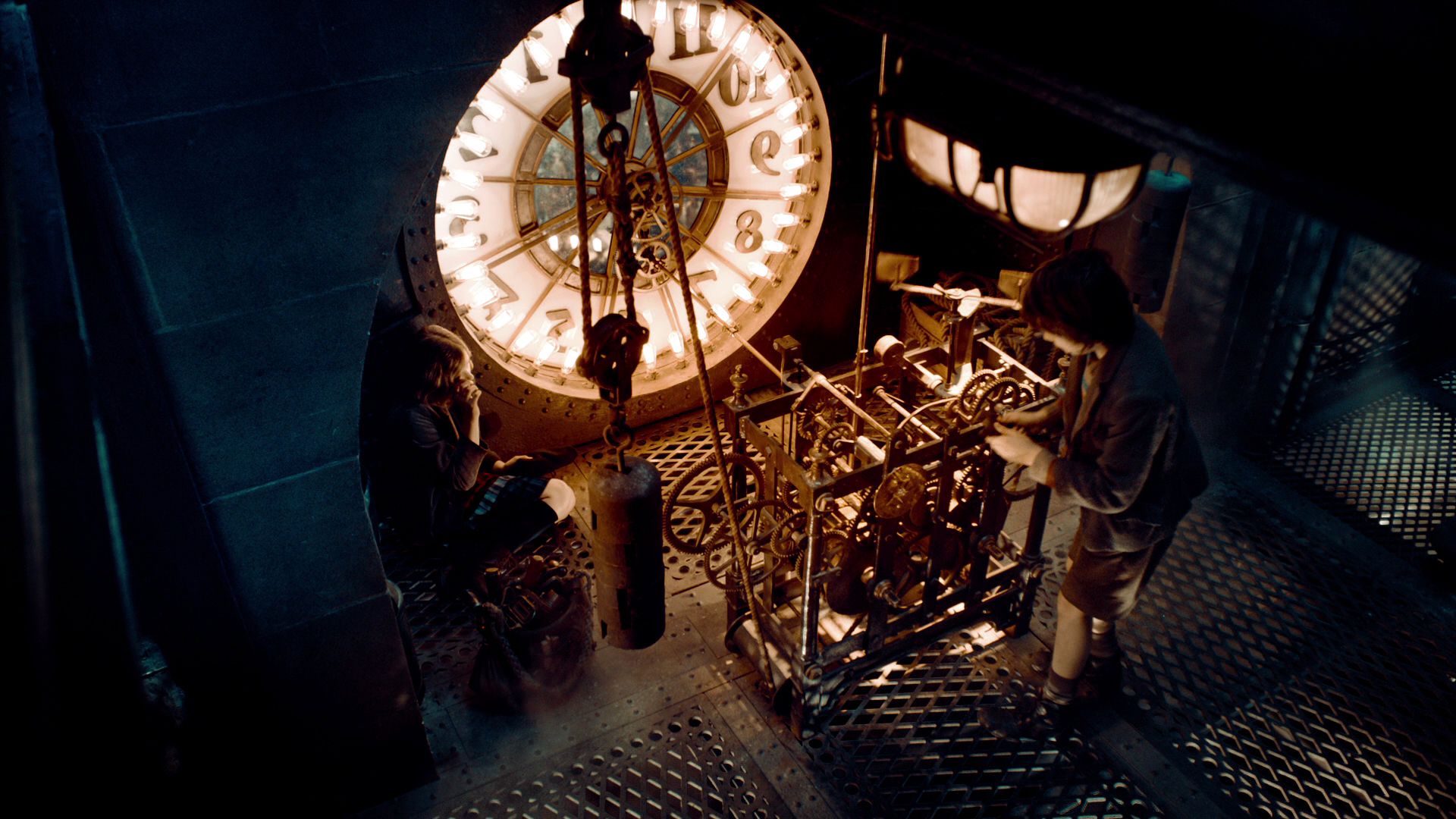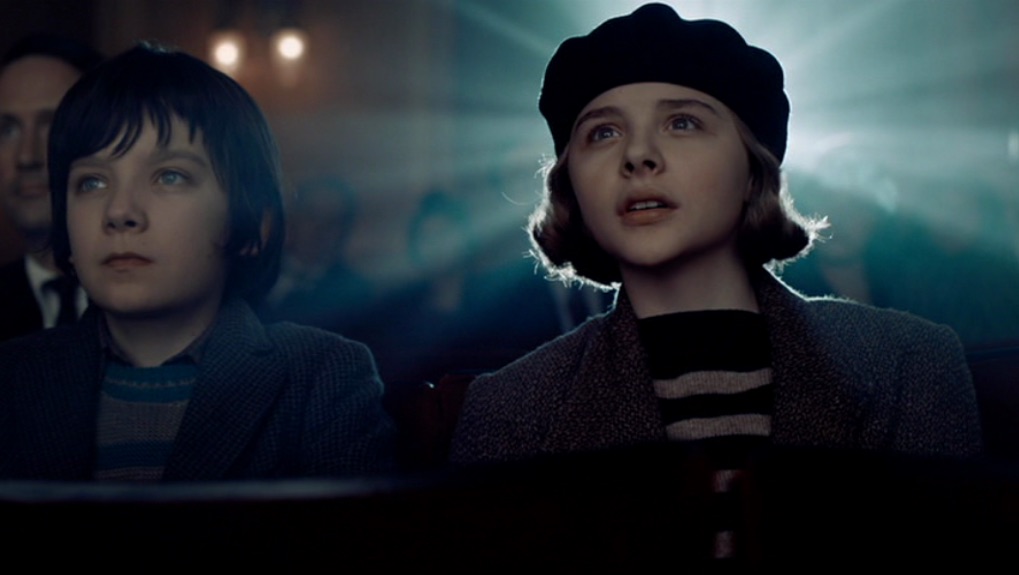Martin Scorsese, known for his illustrious career focused on crime and faith-themed films, has seamlessly blended these themes together. Throughout his filmography, he has consistently delivered exceptional movies. Hugo is a remarkable departure from his usual style, showcasing a family-friendly adventure set in 1930s Paris, carrying an enchanting and magical essence that distinguishes it from his previous works.
With the benefit of a 4K remaster, the film reaches new heights of visual brilliance and storytelling. How has Hugo held up since its release? How does it benefit the 4K remaster? Find out in this Hugo review!
Hugo (2011)
Production Company: GK Films, Infinitum Nihil
Distributor: Paramount Pictures
Director: Martin Scorsese
Release Date: November 23, 2011

The film revolves around the resourceful young orphan, Hugo Cabret, (Asa Butterfield). Living within the walls of a train station, Hugo utilizes his craftsmanship to repair clocks and gadgets. Central to the story is a mysterious automaton left behind by his late father. With the belief that the automaton conceals a hidden message from his dad, Hugo endeavors to restore it to its former glory.
In the midst of his journey, Hugo encounters the spirited Isabelle (Chloë Grace Moretz). Together, they embark on a thrilling adventure to unveil the automaton’s secrets and, in turn, unearth profound truths about themselves. Along the way, they face challenges, notably escaping the clutches of the dastardly station inspector while also seeking to aid “Papa” Georges.

Sacha Baron Cohen delivers a memorable performance as the station inspector, relentlessly pursuing Hugo as if he were a fugitive. He is the closest thing to being an antagonist but also the source of comic relief. Meanwhile, Sir Ben Kingsley’s portrayal of Georges Méliès, a weathered old man with a mysterious past, is nothing short of Oscar-worthy.
Georges Méliès is the heart and soul of Hugo, drawing inspiration from a real-life silent film director and special effects pioneer. Martin Scorsese, known for his passion for film preservation and involvement with the Film Preservation Society, beautifully weaves the story around Méliès rather than just a boy and his automaton.

Scorsese masterfully captures the essence of silent films through breathtaking cinematography, music, and set design, evoking a nostalgic journey back in time. The movie ingeniously blends the magic of the past with a fresh perspective for today’s audience.
Hugo is a heartfelt tribute to the art of storytelling, particularly the enchanting era of silent movies. It pays homage to Georges Méliès and his significant contributions to cinema, sprinkling tasteful nods to icons like Harold Lloyd and Charlie Chaplin throughout lively action scenes.
With an enchanting atmosphere akin to wandering through a dream, Scorsese’s meticulous attention to detail creates a true work of art. The liberal use of steam from the trains swirling in the background adds to the film’s magical ambiance, leaving viewers mesmerized by the experience.

Hugo, the visually captivating masterpiece by Martin Scorsese, was meticulously shot at a ratio of 1.78:1, using the state-of-the-art ARRI ALEXA Camera, and the renowned Cooke 5/i Lenses and Cooke S4 Lenses. Originally intended for a 3D experience, this film’s extraordinary play with light and color is nothing short of hypnotic.
The careful color grading accentuates the enchanting interplay of teal and orange hues, drawing a striking parallel to the contrast of black and white photography. The only drawback is that Scorses succumbed to computer effects and while most of the time it isn’t too distracting, there are some dubious-looking green screen effects.
Hugo delivers an awe-inspiring experience with its captivating physical sets that transport you back to the golden era of Hollywood, some exterior shots in 1930s Paris may not entirely withstand the test of time. The attention to detail and craftsmanship in creating the sets are truly remarkable, exuding an unmistakable “old Hollywood” feel that adds to the film’s allure.

In scenes where actors interact with greenscreens, there’s a noticeable impact on their performances. The air feels somewhat static, and the background can appear overly pristine and artificial. The limitations of working with greenscreens become evident as actors’ movements are constrained, unable to fully explore the depths of their characters in these moments.
In this cinematic gem, Scorsese’s signature flair for long tracking shots takes center stage, offering a culmination of his artistic journey. Witnessing Hugo in 3D was an indescribable treat for those fortunate enough to experience it. The film’s depth unfolds as the camera gracefully maneuvers through the intricate inner workings of the bustling train station.
Interestingly, some shots in Hugo transcend the 1930s Paris setting, transforming into a captivating fantasy with a steampunk allure. In stunning 4K resolution, the massive gears and flywheels reveal their grandeur, while every imperfection and glimmer of light shimmer spectacularly.

The breathtaking 4K image quality of Hugo creates a mesmerizing visual spectacle, with the golden light exuding a truly incandescent charm. However, to truly capture Hugo’s essence, experiencing it in 3D is essential. Martin Scorsese’s masterful shot compositions, complemented by atmospheric effects like swirling steam and falling snow, come to life in the intended 3D format, providing an unparalleled immersive experience.
While the 4K transfer of Hugo is undeniably impressive, it can only take you so far. Sir Ben Kingsley’s tour de force portrayal of Georges Méliès is profound. His regret is palpable, etched into every line on his face. However, without the depth of the 3D experience, you might miss out on the magical whimsy that permeates the atmosphere and the underlying spirit of invention that lies at the core of the story’s themes.

Martin Scorsese, renowned for his exceptional character studies and crime films, pleasantly surprised audiences with this heartwarming family-friendly film. Before Hugo, Kundun (1997) was the last family-friendly movie he directed. However, considering his age and career trajectory, it seems unlikely that he will make another in the future.
It’s truly a missed opportunity, as Scorsese’s prowess in crafting engaging narratives extends beyond tales of hitmen and mobsters. The success of Hugo demonstrates his ability to handle family-oriented themes with the same finesse and brilliance.
Since Hugo was released, Scorsese has not ventured into the world of 3D cinema again. It leaves us wondering what mesmerizing wonders he could have offered, potentially rivaling James Cameron‘s 3D cinematic achievements. With a willingness to infuse family films with profound layers of thematic depth, Scorsese had the potential to deliver awe-inspiring eye candy that captivates audiences in a whole new dimension.
Hugo was reviewed via video-on-demand purchase by Niche Gamer. You can find additional information about Niche Gamer’s review/ethics policy here. Hugo is now available via streaming on Vudu Fandango.
